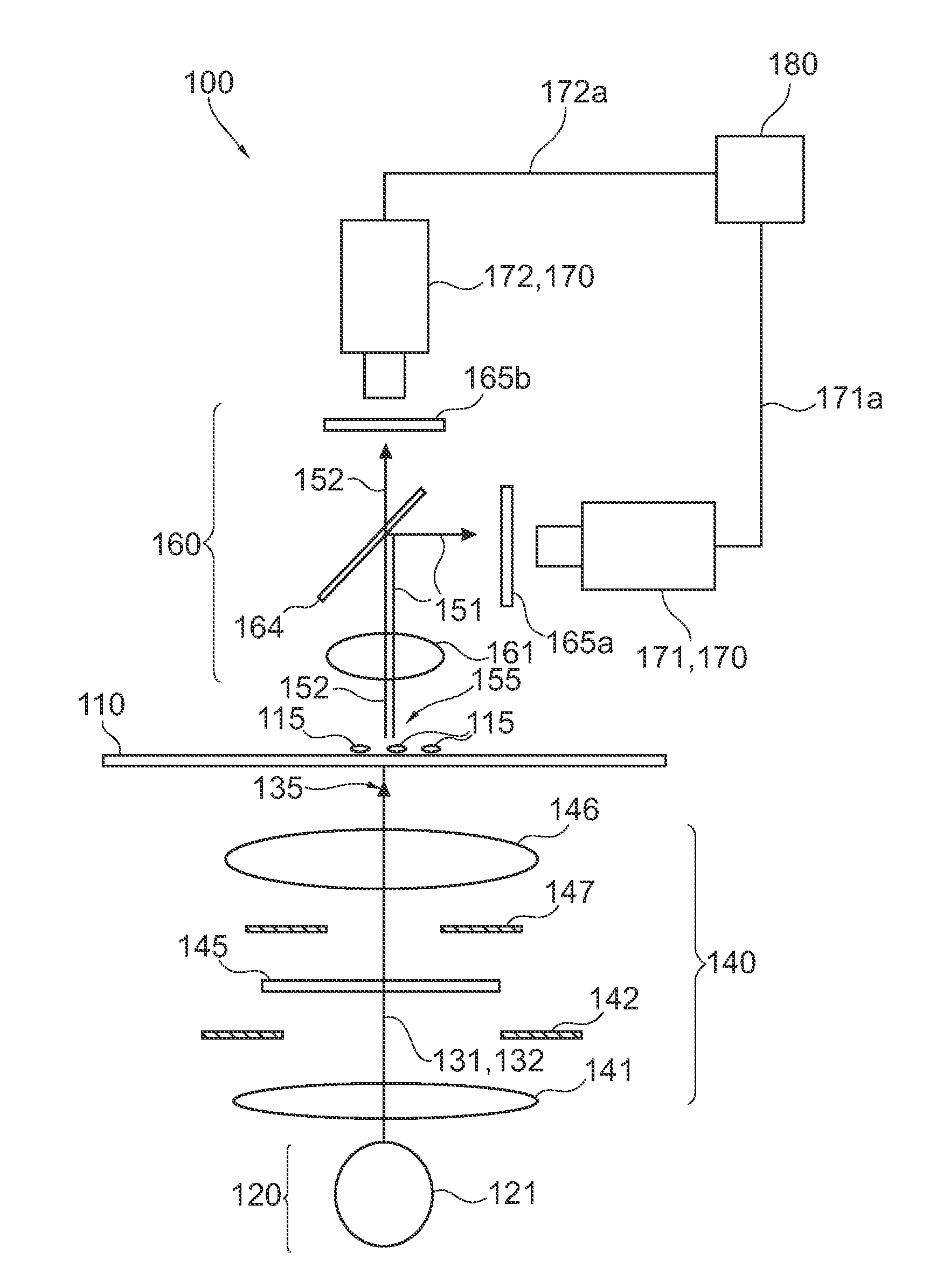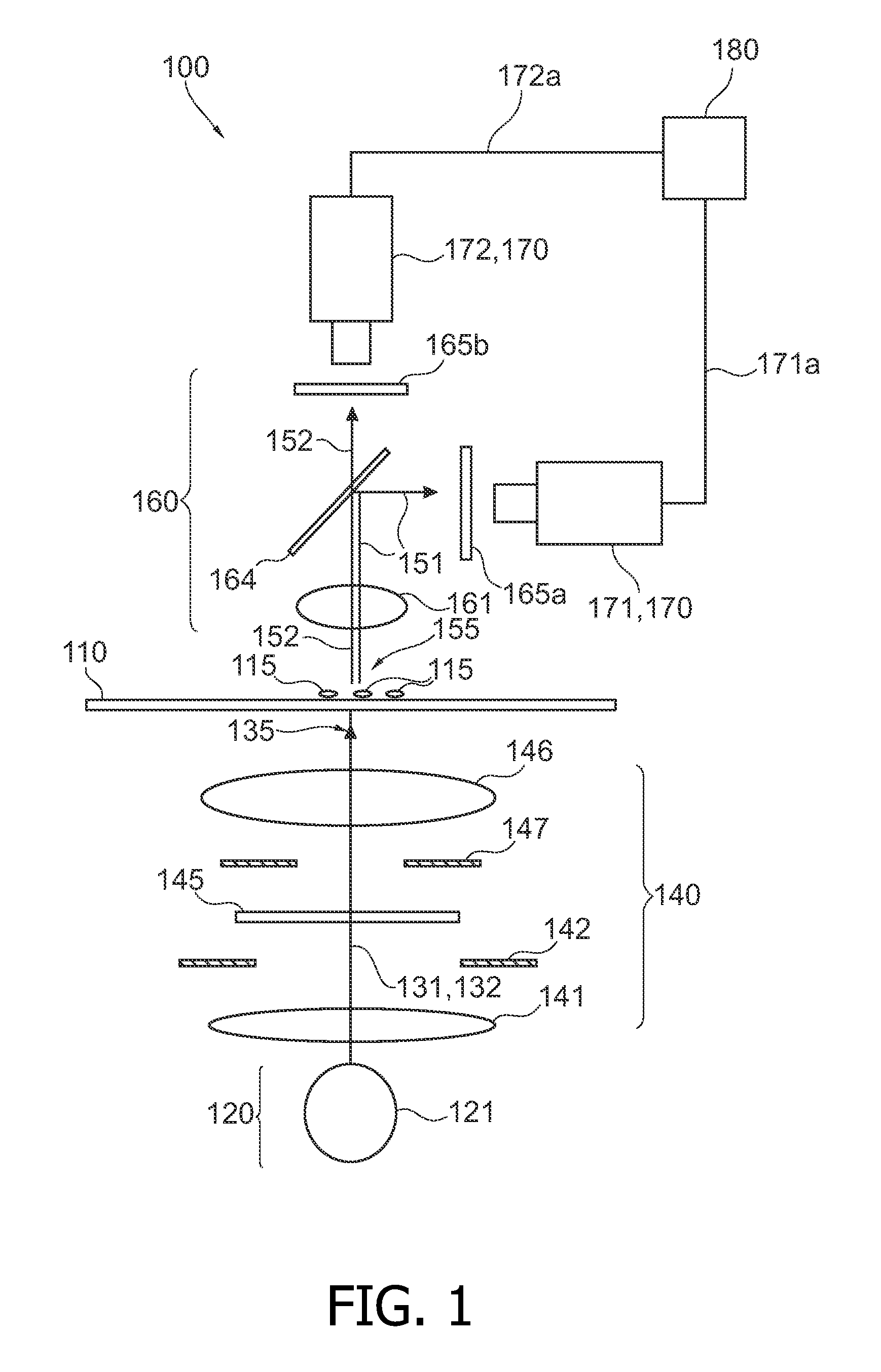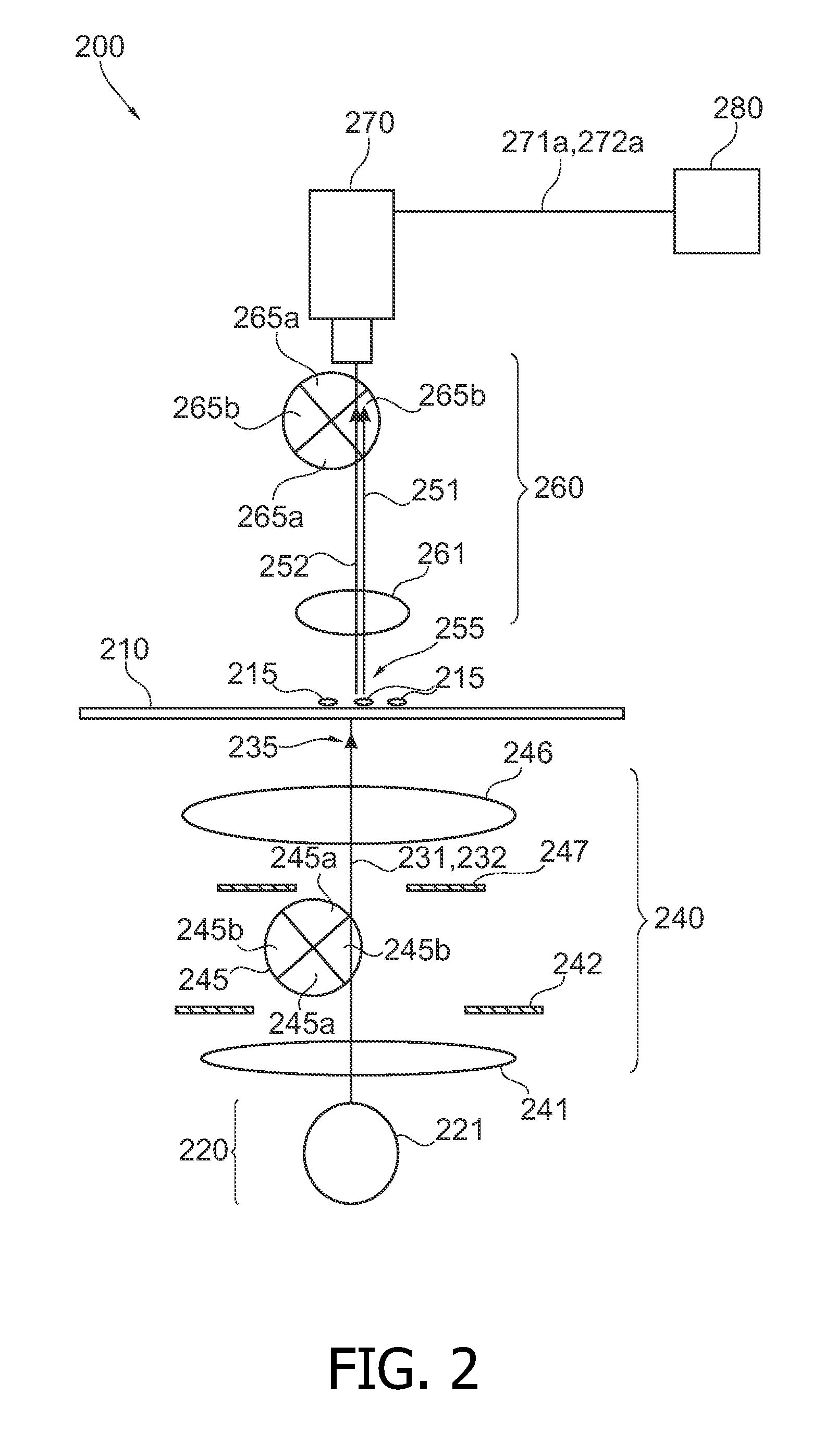Analyzing biological cell material based on different interactions between illumination light and cell components
a technology of illumination light and cell components, applied in the field of analyzing biological cell materials, can solve the problems of time-consuming and expensive cell sorting procedure before the real cytometry measurement may become obsolete, and achieve the effects of significant improvement of diagnostic accuracy, time-consuming and expensive, and strong change of optical properties
- Summary
- Abstract
- Description
- Claims
- Application Information
AI Technical Summary
Benefits of technology
Problems solved by technology
Method used
Image
Examples
Embodiment Construction
[0068]The illustration in the drawing is schematic. It is noted that in different figures, identical elements or similar elements having the same function are provided with reference signs, which are different from the corresponding reference signs only within the first digit.
[0069]FIG. 1 shows a cell-analyzing device 100, which is adapted for carrying out a UV DNA absorption cytometry in combination with autofluorescence of NAD(P)H. The device comprises a carrier element 110, which is realized by means of an object holder known for instance from optical microscopy. The carrier element 110 supports cell material 115, which may contain both benign respectively normal cells and malign respectively cancer cells. The device 100 is adapted to facilitate an identification of the type of cells 115 such that compared to known devices for cell sorting both the speed and the reliability of the cell identification can be increased.
[0070]The device 100 comprises a light source arrangement 120, ...
PUM
| Property | Measurement | Unit |
|---|---|---|
| wavelength | aaaaa | aaaaa |
| wavelength | aaaaa | aaaaa |
| wavelength | aaaaa | aaaaa |
Abstract
Description
Claims
Application Information
 Login to View More
Login to View More - R&D
- Intellectual Property
- Life Sciences
- Materials
- Tech Scout
- Unparalleled Data Quality
- Higher Quality Content
- 60% Fewer Hallucinations
Browse by: Latest US Patents, China's latest patents, Technical Efficacy Thesaurus, Application Domain, Technology Topic, Popular Technical Reports.
© 2025 PatSnap. All rights reserved.Legal|Privacy policy|Modern Slavery Act Transparency Statement|Sitemap|About US| Contact US: help@patsnap.com



